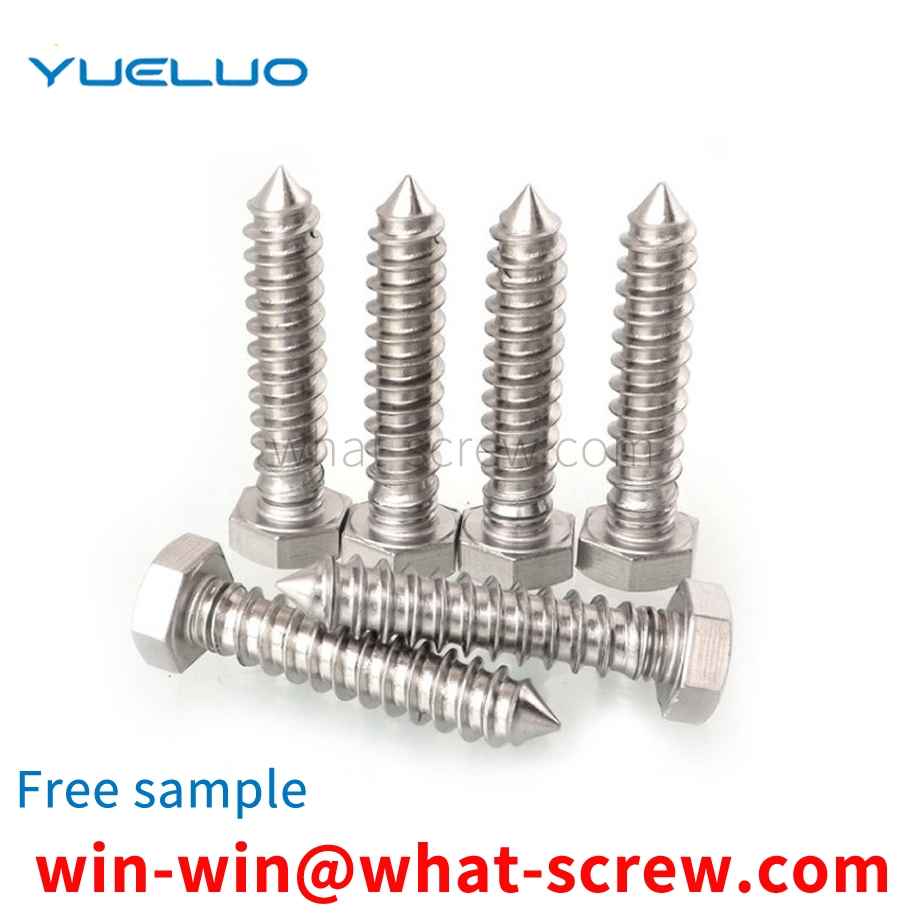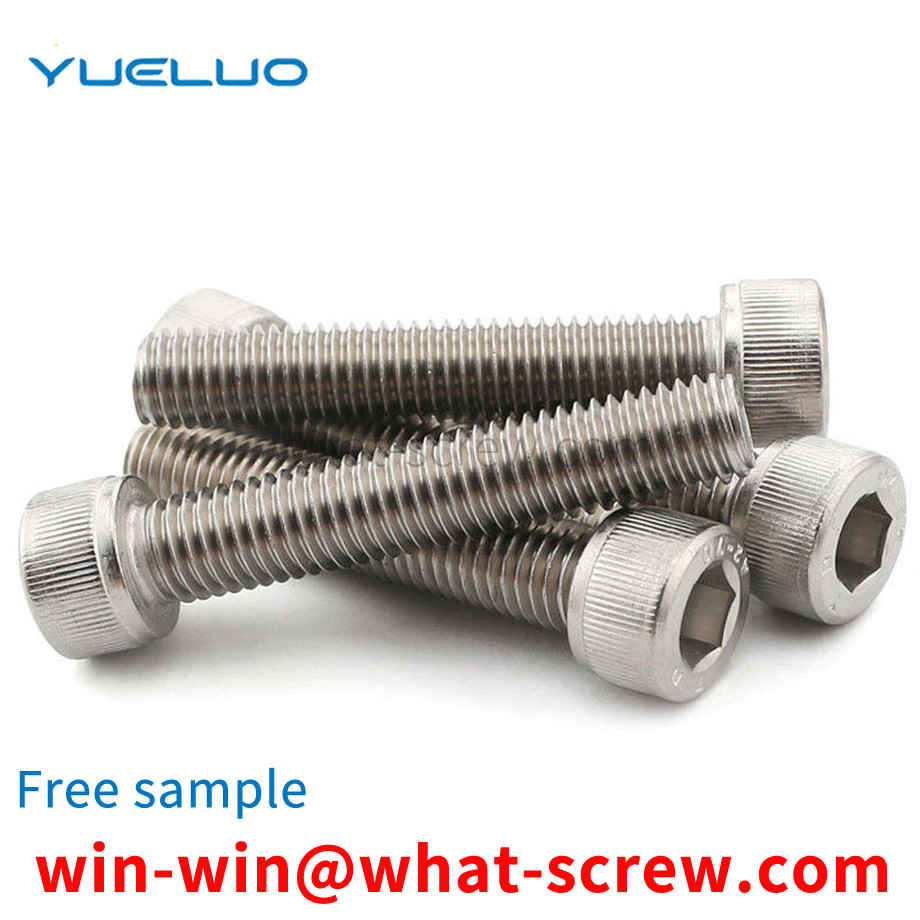According to the development and evolution process of self-tapping screws, we believe that the main types of self-tapping screws are as follows: 1. Common self-tapping screw threads are self-tapping threads, also known as wide thread. The surface is mostly electroplated. 2. Self-cutting and self-tapping screws are called scraping ends of self-tapping screws in my country's standard. The threads are self-tapping threads or machine threads, and the cross grooves are also H type. There are several types of self-cutting self-tapping screws: cross recessed pan head self-cutting self-tapping screws, cross recessed countersunk head self-cutting self-tapping screws. Cross recessed countersunk head self-cutting self-tapping screws, hexagon head self-cutting self-tapping screws. 3. Self-extrusion and self-tapping screws (self-tapping locking screws) The threads of self-extrusion and self-tapping screws are generally machine threads, and self-tapping threads are rarely used. In the wrenching method, in order to ensure the use of high-speed automatic assembly wrenches, slotting is generally not recommended. The cross section of the screw of the self-extrusion self-tapping screw is triangular. So it is also called triangular thread screw. 4. Self-drilling and self-tapping screws (self-drilling screws) The threads of self-drilling and self-tapping screws are self-tapping threads according to Chinese, German and international standards. In the American ASME and SAE standards, the BSD self-drilling self-tapping screws are self-tapping threads, and the CSD self-drilling self-tapping screws are machine threads. Self-drilling self-tapping screws are not recommended for slotted and normal hex head. 5. Metal driving screws (metal tapping screws) The metal driving screws have multiple threads and special threads with a certain helix angle. Only the American standard has metal drive screws, and there are no Chinese and German standards. 6. Wallboard self-tapping screws (dry wall screws) Wallboard white tapping screws are special threads with horn head, cross groove (H type) and 60° profile angle, and the surface is mostly phosphate treatment (phosphating). 7. The cross groove of the fiberboard nail is Z-shaped, and the surface treatment is mostly electroplating. There are several types of fiberboard nails: countersunk head, double countersunk head fiberboard nails, pan head, pan head flange (with pad) fiberboard nails, semi-countersunk head, semi-countersunk head flange (with cushion) fiberboard nails. 8. Combination self-tapping screws Ordinary self-tapping screws, self-cutting self-tapping screws, self-drilling self-tapping screws, etc., and flat washers, elastic washers (including spring washers, elastic locking washers, etc.). 9. Others Self-tapping screw types High and low thread double lead self-tapping screws, coarse and fine thread (different pitch) thread self-tapping screws, threads coated with sealing material (fall resistance) self-tapping screws, various composite groove self-tapping screws, Other special self-tapping screws, etc. In short, there are many types of self-tapping screws. With the development of production, the advancement of technology, new materials, new structures, and new thread forms, new self-tapping screw products will continue to appear.
The working principle of the nut is to use the friction between the nut and the bolt for self-locking. However, the reliability of this self-locking is reduced under dynamic loads. In some important occasions, we will take some anti-loosening measures to ensure the reliability of the nut locking. Among them, the use of lock nuts is one of the anti-loosening measures. There are also two types of locking nuts. One is to use two identical nuts to screw on the same bolt, and a tightening torque is added between the two nuts to make the bolt connection reliable. The other is a special lock nut, which needs to be used together with a lock washer. As shown in FIG. 1, a plastic gasket 2 is arranged in the center of the nut 1 to play a locking effect, but the process is complicated and the production is inconvenient. One is to drill through threaded holes from the outer surface of the nut to the inner thread surface (usually 2, distributed at 90 on the outer surface), which are used to screw in small-diameter countersunk head screws. The purpose is to apply a thread to the thread. A centripetal force prevents the lock nut from loosening. At present, the lock nut with better quality on the market is inlaid with small copper pieces that are consistent with the thread of the lock nut on the inner surface of the nut, which is used to prevent the radial jacking screw from directly contacting the locked thread and being damaged. By. This kind of lock nut is gradually applied in the shaft end locking of rotating motion parts, such as the anti-looseness of the bearing at the mounting end of the ball screw. The process is equally complex.
In the modern industrial field, products such as nuts and bolts are widely used to lock structural parts, but at the same time we also find that in many cases, especially when applied to vibration, we often need to lock the already locked Structural parts are regularly repaired and strengthened to prevent structural dislocation caused by loose nuts and bolts.
In order to achieve the above purpose, Guangdong Yueluo Hardware Industry Co., Ltd. discloses a tamper-proof nut, which includes an upper part, a lower part, and an inner threaded hole penetrating the upper part and the lower part. The cross section of the inner threaded hole is circular, so the The lower part is an equilateral triangle cylinder, and the apex of the equilateral triangle cylinder has an arc structure, and the arc structure includes a left arc part and a right arc part with the angle bisector as the center of symmetry, and the lower part has an arc structure. A tamper-proof portion protruding from the lower surface is formed, and the tamper-proof portion is arranged at the left arc portion or the right arc portion.
At present, in the riveting of automobile and motor car parts, especially the parts that have vibration and need to move frequently, such as automobile steering gear, ordinary rivets and double-drum rivets are mostly used for riveting. Due to the limitations of the structure of these two products After riveting, the product has the defect of insufficient strength and easy to loosen and fall off, and it cannot be disassembled and can only be used once, thus affecting the quality and performance of the riveted product.
We have many years of experience in the production and sales of screws, nuts, flat washers, etc. The main products are: black 912 screws, JISB1196 nuts, hexagonal socket screws, hand-tightened disc bolts and other products, we can provide you with suitable products for you Fastener Solutions.



















 Service Hotline
Service Hotline




